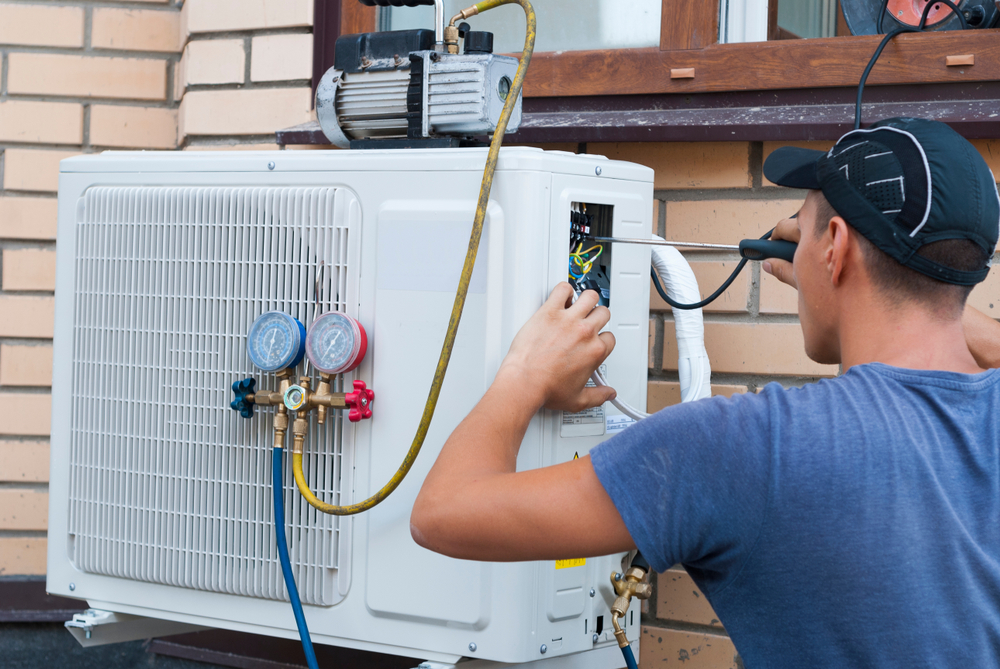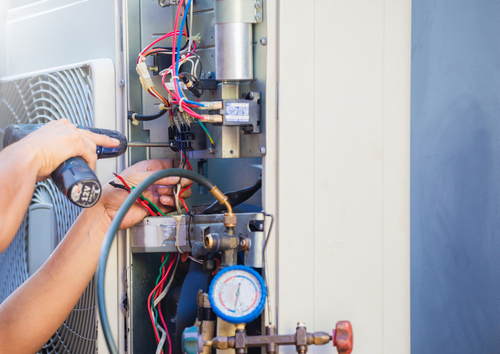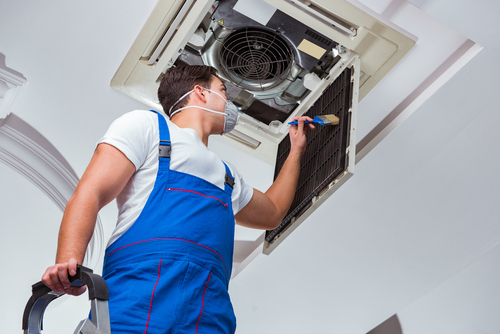
The HVAC Fundamentals Every Contractor Should Know
The HVAC industry is on a steady increase, even as there is economic uncertainty elsewhere. As long as buildings are being used, there’s going to be the need to heat and cool them. In addition, concerns about air quality and COVID-19 means that there are a lot more homes and businesses interested in upgrading their legacy systems. All these factors combined mean that this is the perfect time for new faces in the industry. This applies to apprentices just setting out on their own, as well as seasoned professionals moving from working for a contractor to starting their own business. Here are some HVAC fundamentals both parties should be aware of.
Table of Contents
Know Your System Types
There are four main types of HVAC systems that you are likely to encounter on a given job, and you need to know how to service each:
Heating and Air Conditioning Split System
Heating and air conditioning split systems are the most common type of HVAC fundamentals system, suitable for any region or building style. Thus, components are present both inside and outside the building, including air conditioning to cool the refrigerant and fans or furnaces to circulate air. Ducts will move around the heated or cooled air.

Hybrid Split System
This is essentially an improved version of the original split system, focusing on being more energy-efficient. This system has a heat pump that heats and cools refrigerants, along with a furnace/evaporator coil that converts refrigerant and helps circulate the air. However, this hybrid system allows the property owner to switch between a gas-powered system and a hybrid one. The ductwork moves the air around the building as usual.
Duct Free Split Heating/Air Conditioning System
This more expansive and expensive type is generally seen in commercial buildings, especially if a normal duct system can’t reach certain areas. This consists of a heat pump/air conditioner to manipulate the refrigerant and compact fan coil in every area or room. This allows the property owner to manipulate the conditions in each room as needed.
Packaged Heating/Air Conditioning System
Some buildings may be short on space, which is where this option shines. Here, the air conditioner and heat pump are together in a large outdoor cabinet. In many cases, the cabinet also houses the fan coil and evaporator. This means less interior noise, but these systems also generally have a shorter lifespan.
Maintenance Checks
The chances are that your average HVAC contractor’s most common job is going to be performing maintenance checks for your customers. If you service a building like an apartment complex or commercial structure, you will most likely have a maintenance contract/agreement with them to perform checks regularly. This generally includes the following processes:
— Checking the air filter and replacing when needed. Some professionals replace the filter even if it appears to work fine.
— Looking at the thermostat to make sure the ambient temperature matches it. If not, it may need to be repaired.
— Lubricating all relevant parts, like belts, bearings, and gears properly.
— Cleaning the system can include the evaporator coils, condenser coils, grills, vents, or air ducts. When these get dirty, they become less efficient.

Don’t Neglect Continuing Education
The fact is that the HVAC industry may be growing, but things aren’t set in stone. New trends will shape the industry, much like the desire to go eco-friendly is right now. Other concerns may be new safety regulations or customer preferences. It’s important to make sure that you are always following industry resources to see how things are changing as a professional. This helps with customer satisfaction as well as your bottom line.
Always Focus On Safety
This point is something that no technician can ignore, whether they are a veteran of the industry or just working their best job. The best starting point for a safe workflow is making sure that you always assess a situation before starting tasks. This gives you the chance to look for any potential issues before being exposed to any issues or risks.
In addition to double-checking the situation before you start, you should also make sure you double-check your equipment. Making sure that all your tools and equipment are functioning properly means a more efficient job, as well as a safer one. Make sure you have all your necessary PPE (personal protective equipment) out on the job as well. Some base examples include:
— Face shields
— Respiration gear
— Hard hats
— Workboots
— Earplugs
— Safety glasses
This is not an exhaustive list of gear that you may need in every situation. If you’re not sure or are in a unique situation (handling a certain chemical), don’t be afraid to ask a senior professional for guidance. Better to take the extra few minutes to get an answer than potentially hurt yourself.
Buying Project Management Software
This last point may be a bit of a surprise when we talk about HVAC fundamentals. However, if you want to implement a modernized HVAC fundamentals into a company, then this is absolutely a purchase that you need to consider. Why is this the case? Modern business efficiency is all about data. You need data on how your business is working to guide your decision-making and act on potential issues before they get out of control. Project management software is critical because it gathers and organizes the information you need to make this task easier.
If you’re looking for a software platform to get started with, eSUB is what you need. We allow you to gather data from all aspects of your operation with employee tracking, equipment tracking, as well as tools to help compare your bids and actuals for current and past jobs. In addition, we make it easy for your field and office teams to stay on the same page by accessing the same materials via the cloud.
